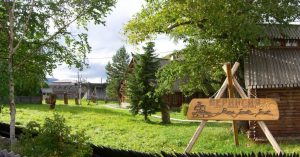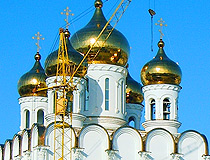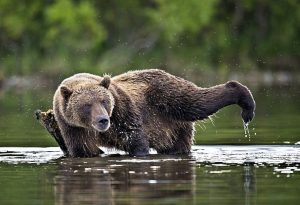- Advertisement -
It wouldn’t be an exaggeration to say Kamchatka is the most striking part of Russia. It stretches across an area of 470,000 square km, about as large as France, Luxembourg as well as Belgium all put together. The peninsula is home to over 160 volcanoes with 29 of them still spitting hot lava and roaring. Apart from the volcanic action, you might also find the peninsula’s flora and fauna quite attractive. Here is an overview of what to expect from a visit to Kamchatka.
Three Brothers Rocks
The Three Brothers Rocks have always been an iconic part of the Kamchatka Peninsula. Local legend has it that the three were once eagles that used to enjoy soaring above the island’s sky. They had made a vow to their father to never eat dead meat. When they backpedalled on their promise, the father was infuriated and he turned the three into rocks.
The rocks are a must see although they are quite hard to get to. They are separated from the city by high mountain peaks and getting close to them by sea is expensive. But, if you can get past these hurdles, you will be glad you did.
Ethnographic Museum

The Kamchatka Ethnographic museum takes you as far back in time as the late Stone Age. Its main focus is the local history of the peninsula, with regards to its plants and wildlife, its native people and their way of life. The exhibits include a collection of old paintings, graphic arts, carvings, sculptures, and handicrafts of the local creative people. While the museum houses ancient artefacts, it is only over a decade old.
Visit Ikar Lake
Follow the hiking trail along the Bystraya River. It will take you through some thick forests and finally lead you to the unspoiled Ikar Lake. It is flanked by hills with stunning white snowcaps, and the atmosphere is generally serene. While on the way, you might meet bears but these are easily scared off with just flares. If you are lucky, you might get to meet the local Evenk people who herd reindeer. Offered near the lake is a horseback tour which, despite taking you through a wet tough terrain, still makes for a wonderful time.
Vulkanarium
This is Russia’s first museum dedicated to volcanoes. Kamchatka was chosen as the site for the museum because of the number of active volcanoes it hosts. While this might not be interesting for the average tourist, science buffs will love it as it is an educational look into the history of volcanic activity on the peninsula.
Trinity Cathedral

Kamchatka is not just a mere natural paradise. There are also man-made wonders, too. Take the Trinity Cathedral for example. It is one of the finest testament to Russian iconic Christian architecture. It is topped with a golden dome and since it’s built on an elevated outcrop, it can be seen from anywhere in the city. The cathedral was meant to have an ancient appearance, a goal it achieves quite stunningly. It is not complete yet but if you can get there, you will realise that it sure is worth your visit.
Animal and Plant Life on Kamchatka

Although the peninsula is a ring of fire dotted with active volcanoes, it still is a paradise for many animal and plant species. Since the peninsula has a varied climate and an equally dynamic terrain, it is a habitat for diverse wildlife. You will find large animals such as brown bears, moose, and bighorn sheep. There are also smaller animals such as the ferocious wolverine. Kamchatka is home to over 5,000 brown bears. One thing that makes the peninsula unique is that its landscape, fauna, and flora are all pristine, untouched by civilisation.
Kamchatka climate
The climate of Kamchatka is unstable. There are frequent violent winds, snow storms, and a lot of foggy days. It greatly varies from point to point depending on the location, relief, and there is also some influence from the Pacific Ocean. The best time to have a vacation there is between May and September. During this time, the temperatures are at their most comfortable.
Getting around
Same as with Altai, it is pretty hard to get around Kamchatka so be prepared for that. The reason is twofold. On one hand, this is a protected region so you need permission to access most parts. However, this is easily manoeuvred around by just booking a tour. On the other hand, the public transport system in the region is quite poor. There aren’t many buses connecting the various points of interest.
- Advertisements -
- Advertisements -



